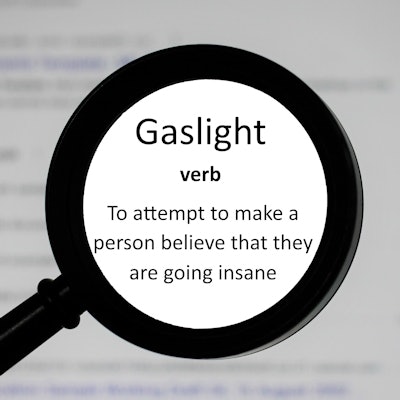
It's no secret that radiology departments have instances of abuse and bullying, and gaslighting -- that is, manipulating co-workers or patients into doubting their experiences or shutting down their knowledge or expertise -- can be one of them, according to a poster presented at the virtual American Roentgen Ray Society (ARRS) meeting, held from 18 to 22 April.
A workplace's atmosphere can dramatically influence the effectiveness of its staff, wrote a team led by Dr. Brandon Ballane of New York Medical College in Valhalla, New York. That's why abuse such as gaslighting can be so damaging.
"Gaslighting uses manipulation techniques directed at employees ... [that lead] to distrustful relationships, poor communication, and a hostile work environment," the group noted.
The concept of gaslighting comes from a 1938 play called "Gas Light" that was later adapted into two films, one in 1940 and the other in 1944. In the play, a husband tries to convince his wife that she is losing her sanity, in part by manipulating the gas lights in their home. When she notices, he denies that it's happening.
The play helped create "the term 'gaslight,' meaning a form of psychological abuse," Ballane and colleagues explained.
How can gaslighters be recognized? They tend to use the following tactics:
- Manipulating colleagues to gain power in the relationship, often via guilt
- Promoting a false narrative of a colleague to other members of the workplace
- Convincing colleagues to second-guess their thoughts and doubt their perceptions
- Directing consistent bias and negativity at colleagues and/or discrediting their work and achievements
When confronted, however, gaslighters usually deny they are manipulating colleagues or spreading false information.
Gaslighters tend to demonstrate "passive aggression and defense mechanisms rather than problem-solving," the team wrote.
Needless to say, gaslighting has a negative effect on the workplace, impairing efficiency and productivity, disrupting open communication, and damaging efforts to build a culture of collaboration and effective decision-making -- all of which can have a real impact not only on staff morale but also on patient care.
There are a number of ways to prevent gaslighting in the workplace, and although they may sound simple, they are not necessarily easy. Radiology departments should consider doing the following:
- Create a collaborative and comfortable workplace environment.
- Address medical staff's concerns in a calm, conversational manner.
- Empower members of the radiology staff to make collaborative diagnostic decisions.
- Provide opportunities for staff to demonstrate knowledge and skills.
- Promote teamwork.
If gaslighting behavior is identified, the "victim" should speak to the person directly, as well as to fellow staff members (to determine whether the behavior is isolated or widespread). If that doesn't work, he or she should get more support.
"Escalate your concerns to supervising individuals or departments ... [and] contact the human resources department to address the hostile environment of the workplace," Ballane and colleagues urged.
This type of workplace abuse must be taken seriously, the team concluded.
"Gaslighting can have serious consequences on the mental health of the radiology staff, workplace relationships, and work effectiveness," the group wrote. "Gaslighting must be identified and addressed in the workplace as it will affect the mental health and well-being of the radiology staff as well as have implications on their patient's long-term health."



















